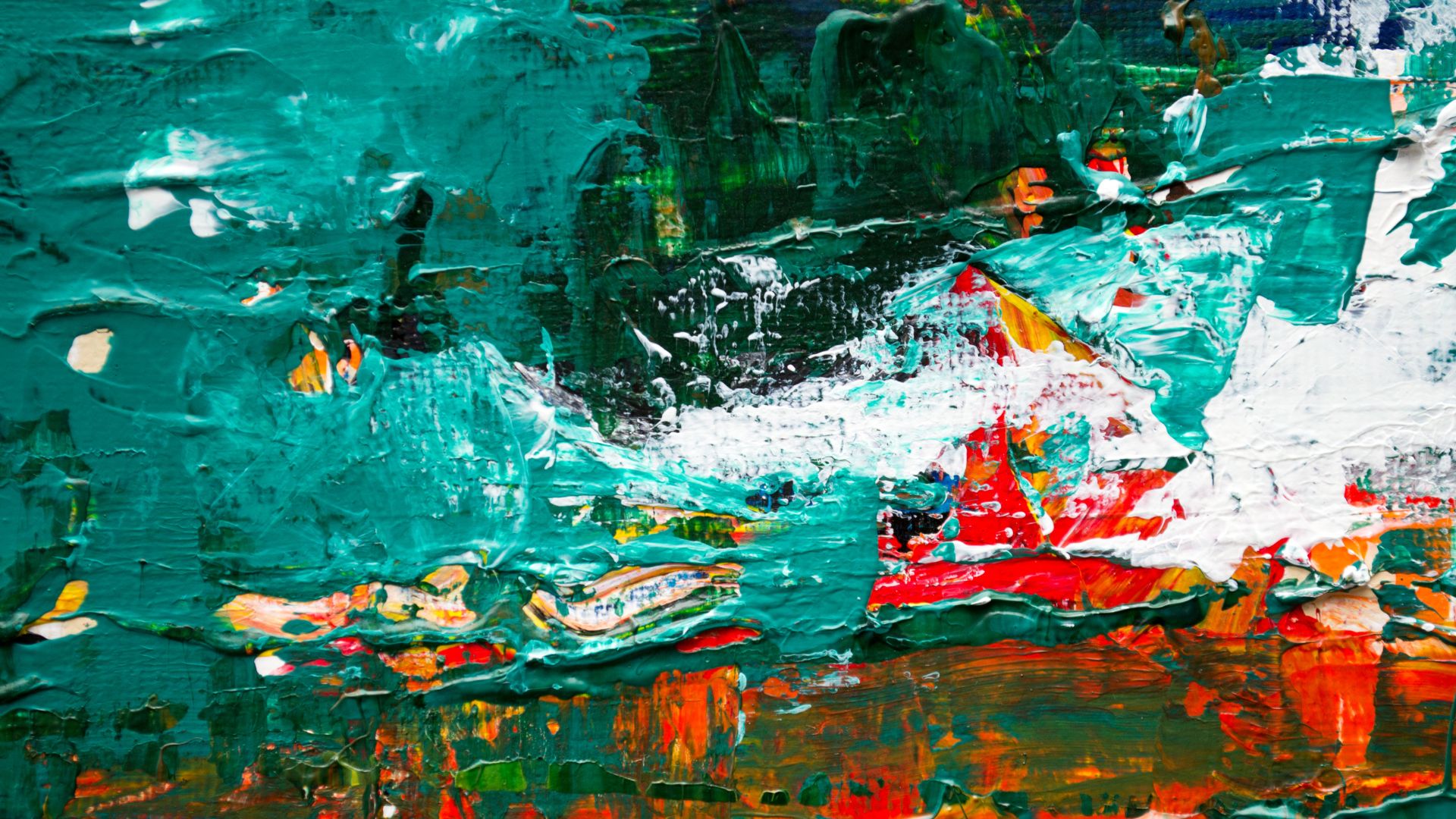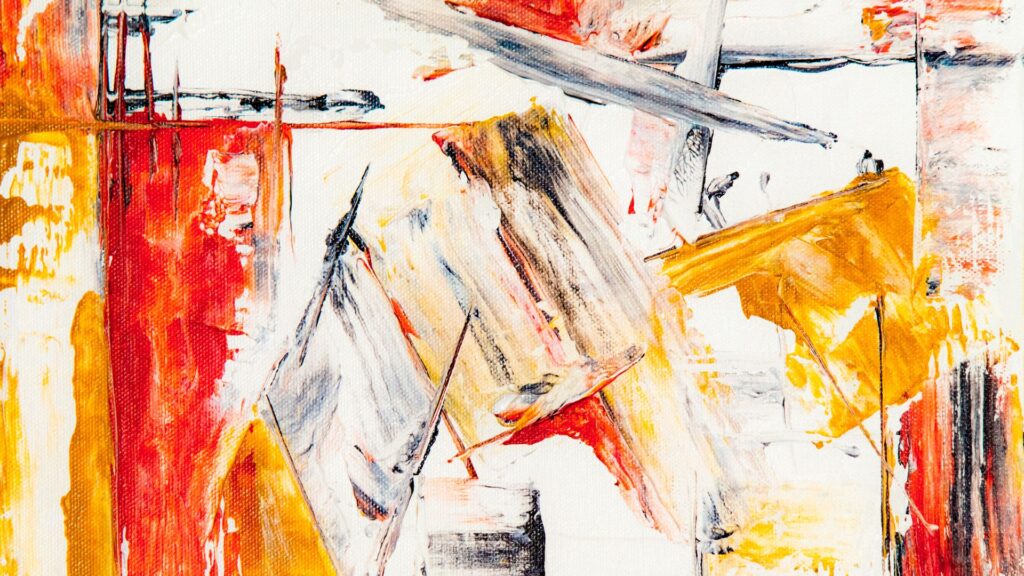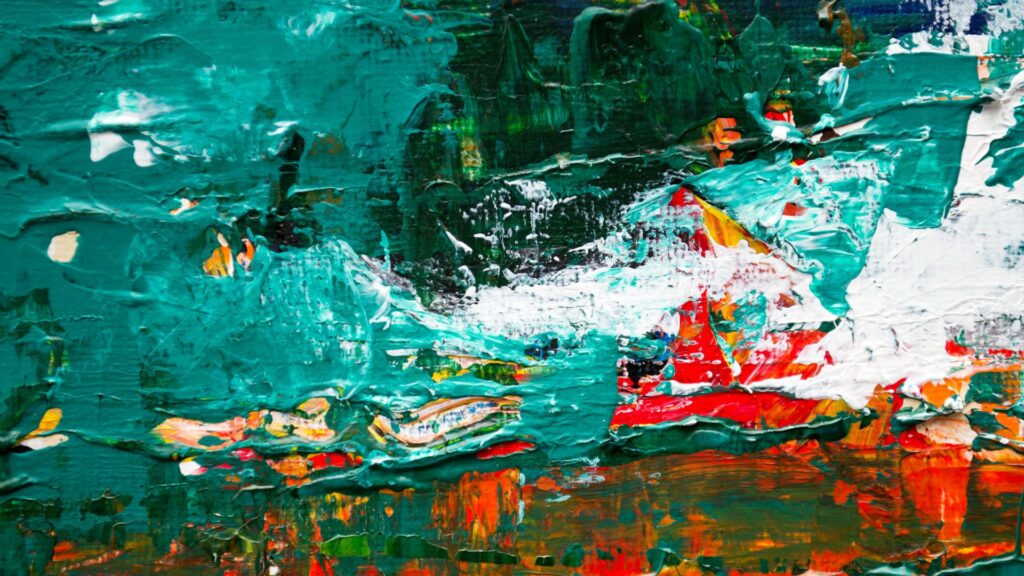
How to mix colours like a pro in acrylic and oil painting
Colour mixing is one of the most essential skills every painter needs to master. Whether you’re working with acrylics or oils, the ability to mix colours effectively not only enhances the vibrancy and depth of your work but also plays a crucial role in setting the mood, atmosphere, and emotion of the painting. From creating harmonious blends in portraits to achieving striking contrasts in landscapes, understanding how to mix colours like a pro can dramatically improve the quality of your artwork.
In this article, we’ll break down the basics of colour theory and give you tips on how to mix colours in both acrylic and oil painting, so you can confidently create the hues and shades that make your art pop:
- Make or break a painting: Colour theory
- Basic colour theory
- Mixing colours in acrylics
- Mixing colours in oils
- Colour mixing: A vital skill for every aspiring artist

Make or break a painting: Colour theory
The right colours can make or break a painting. Colour has the power to set the mood of a piece, highlight key areas, and bring life to your work. Whether you’re painting a serene landscape, a vibrant still life, or an emotional portrait, the colours you mix will guide the viewer’s perception and evoke specific feelings. But for beginners, understanding how to mix colours can feel overwhelming—especially when it comes to creating the exact shade or tone you envision. The key is to get a good grasp of colour theory and the different techniques used in acrylic and oil painting to mix colours smoothly and effectively. With a bit of practice, you’ll be mixing like a professional in no time!
Basic colour theory
Before we dive into the practical side of mixing colours in your paintings, it’s important to get a basic understanding of colour theory. Colour theory is a set of principles used to mix and match colours in a way that looks pleasing to the eye. There are a few key concepts that will help guide your colour mixing:
Primary colours are the foundation of all colours. In both acrylic and oil painting, the primary colours are red, blue, and yellow. All other colours can be created by mixing these primary colours together.
Secondary colours are created by mixing two primary colours.
For example:
- Red + Yellow = Orange
- Blue + Yellow = Green
- Red + Blue = Purple
Complementary colours are colours that sit opposite each other on the colour wheel, such as red and green, or blue and orange. Complementary colours create contrast and can make each other appear more vibrant when used together.
Analogous colours sit next to each other on the colour wheel, such as blue, blue-green, and green. These colours blend well together and are great for creating harmonious, subtle gradients in your work.
By understanding these basics, you’ll be able to mix colours more confidently and create the right balance for your paintings.
Mixing colours in acrylics
Acrylic paints are water-based and dry relatively quickly, which can be both an advantage and a challenge when it comes to mixing colours. Here’s a step-by-step guide to mixing colours in acrylic paints:
Start with the basics: Begin by choosing a set of primary colours (red, blue, yellow) and a few secondary colours (green, purple, orange). You’ll also want to have white and black on hand to lighten or darken your colours.
Mixing for vibrancy: Acrylic paints are vibrant on their own, but to avoid muddy colours, you’ll want to mix your paints with care. Start with small amounts of paint, adding just a bit of the secondary colour to your primary paint to create a smooth blend. For example, to create orange, mix red and yellow together in equal parts, then adjust as needed for the shade you prefer.
Achieving smooth blends: To mix colours smoothly in acrylics, use a palette knife or a brush with soft, rounded bristles. Apply a little water or acrylic medium to the paint to help it flow and mix better. Keep in mind that acrylic paint dries quickly, so mix in smaller batches to avoid waste.
Preventing muddy colours: One of the most common mistakes when mixing acrylics is creating muddy colours. This often happens when complementary colours (like red and green) are mixed together. To prevent this, try to keep your colour palette as pure as possible and mix small amounts at a time. If you need to adjust the colour, add small amounts of the complementary colour to achieve the right tone without over-mixing.
Experimenting with texture: Acrylics can also be mixed with texture mediums like gels or pastes to add dimension to your work. If you want a thicker consistency for impasto (thick layers of paint), simply mix your paint with a texture medium before applying it to the canvas.

Mixing colours in oils
Oil paints have a slower drying time, which provides more flexibility when mixing colours and adjusting your work. Here’s how to mix colours effectively with oils:
Choosing your colours: Like with acrylics, start with the primary colours (red, blue, yellow) and a couple of secondary colours. You’ll also need white to lighten your colours and black to create darker tones. A good set of oil paints should have a wide range of shades, but you can always create custom colours by mixing primary colours.
Using mediums: Oils are often mixed with solvents like linseed oil or turpentine to change the paint’s consistency and control drying time. These mediums help create smoother blends, but they also affect the transparency and texture of the paint. If you want to create a thin, translucent layer, use more medium. For thicker, more opaque layers, use less medium.
Mixing custom hues: When mixing oil paints, it’s often best to mix a small amount of colour first to see how the paint behaves. Since oil paints take longer to dry, you have more time to adjust the hues and add layers. To create custom shades, try mixing primary colours in different ratios to find the perfect tone for your painting.
Blending for smooth transitions: Oil paints are perfect for creating smooth gradients and soft transitions. Use a clean, soft brush to blend between different colours, especially when working on skin tones or backgrounds. To avoid harsh lines, work in small sections and blend gradually, layering the paint until you’re satisfied with the transition.
Handling the drying time: One of the challenges with oil paints is their slow drying time, which can be both a blessing and a curse. To speed up the drying process, use quick-drying mediums or set up a controlled environment with good airflow. However, embrace the slower drying time for blending and refining your colours over several layers.
Colour mixing: A vital skill for every aspiring artist
Colour mixing is a vital skill in both acrylic and oil painting, and understanding the basics of colour theory will help you mix like a pro. Whether you’re working with acrylics or oils, mastering colour mixing allows you to create more vibrant, harmonious, and realistic paintings.
Let’s recap
- Understand primary, secondary, complementary, and analogous colours to effectively mix and create harmonious colour schemes in your paintings.
- Use a basic palette of primary colours and mix in small amounts to avoid muddy colours. Use a palette knife or soft brush, and consider adding water or mediums for smooth blending.
- Oil paints offer more flexibility with slower drying times. Use solvents and mediums to adjust consistency and transparency, and blend colours gradually for smooth transitions.
- Whether using acrylics or oils, focus on controlling paint consistency, blending carefully with soft brushes, and using the appropriate amount of medium to achieve smooth and even colour transitions.
- Practice mixing colours and experimenting with different combinations, layering techniques, and adjusting ratios to build your confidence and develop your unique painting style.
Remember to experiment with different colour combinations and techniques, and don’t be afraid to make mistakes along the way. With practice, you’ll be able to mix colours intuitively and develop your own unique palette. So grab your brushes, experiment with new hues, and enjoy the creative process!